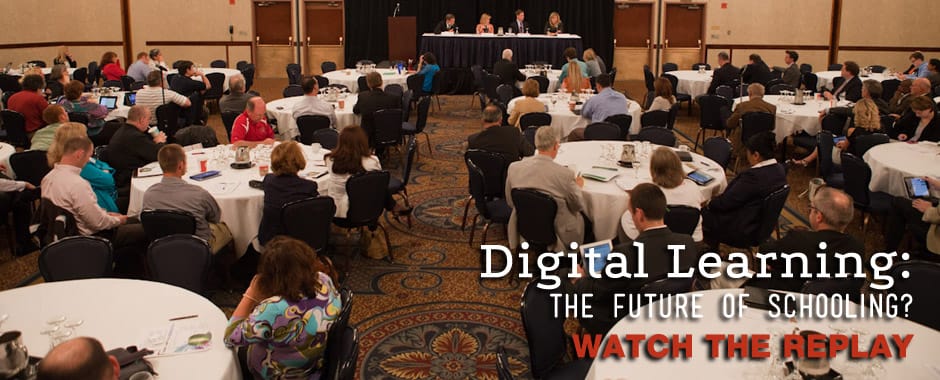
The era of the chalkboard is over. Laptops, SMART boards, Wikis, YouTube, and Gaming are in. Is this progress or just distraction? That was the topic of conversation among nearly 300 educators and policymakers at Fordham’s “Digital Learning: The Future of Schooling?” event last week. (Please check out the video replay here.)
Ohio State Superintendent Stan Heffner opened the event by laying out the problematic mix of technology, education, and kids: “Kids spend their nights in high-tech bedrooms and spend their days in low-tech classrooms.” The remainder of the conversation focused on how to harness kids’ aptitude in technology for effective educational practices.
Fordham – and our event partners, KnowledgeWorks and the Nord Family Foundation –assembled an elite group of digital learning experts and Ohio practitioners to explore best practices and policies. The event’s first panel consisted of four national experts (U.S. Department of Education’s Karen Cator, Public Impact’s Bryan Hassel, iNACOL’s Susan Patrick, and Getting Smart’s Tom Vander Ark), each of whom emphasized the promise and inevitability of digital learning in the classroom.
A few of their recommendations included:
- Colleges of education should equip future teachers to leverage technology in their classrooms.
- Schools should exploit technology to create a multi-faceted student assessment system rather than rely on a single-test assessment.
- Schools should leverage technology to enable excellent teachers to reach more students through video-fed lessons.
The second panel included two Ohio lawmakers (State Senator Peggy Lehner and State Representative Timothy Derickson) and two Ohio education practitioners (Reynoldsburg Superintendent Steve Dackin, who has made his district a leader in blended learning innovation in Ohio, and Susan Stagner of Connections Academy, one of Ohio’s several full-time, online schools). These panelists described the benefits and obstacles to a quality, digitally-infused learning environment. Some of their observations about the benefits of digital learning included:
- Schools have successfully used blended learning environments in flexible credit hour programs.
- Schools have used digital learning environments to provide options to parents within a district. One Ohio district, for example, uses traditional learning environments in two of its high schools, while another high school—a STEM magnet school—uses blended learning approaches.
- Schools have used technology-based solutions to sustain high-quality education during times of budget cuts.
They also provided cautions about digital learning, which included:
- Students often express their interest in having teachers in their lives, even when given the option of digital versus traditional classrooms.
- Political circumstances often constrain school officials from taking risks in technological investments.
- Lawmakers have difficulty defining “blended learning” in legislation because the digital-learning ecosystem changes quickly and is so vast.
Harvard professor Chris Dede writes, “The 21st century is quite different than the 20th in the capabilities people need for work, citizenship, and self-actualization.” Indeed, technology holds the promise of creating powerful learning environments that expand students’ skill sets.
Several schools around the country have already achieved results using tech-based learning—Rocketship and Carpe Diem were two commonly referenced examples by panelists. For the Buckeye State, which has only recently dipped its toes into these murky waters (aside from full-time e-schools, which have operated here for more than a decade), successful integration of technology into the classroom will require significant investment—in teachers who can utilize technology, in hardware and software infrastructure, and in a policy framework that grants schools flexibility to apply digital learning to meet their students’ unique learning needs.
